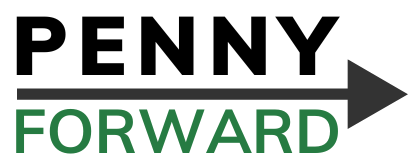By Chris Peterson, AFC®
Reviewer’s Thoughts:
Job searching can be a daunting task, especially when you feel like everyone else knows the rules and you’re just trying to catch up. If you’re like me, social situations can already be awkward, and job hunting can feel like an endless maze of confusion. But here’s the good news: Steve Dalton’s “The 2-Hour Job Search: Using Technology to Get the Right Job Faster” is here to clear up that confusion and guide you through every step.
One of the best things about Dalton’s book is that he gets it—he understands that job searching isn’t something we do often, and the rules aren’t exactly written down. Right from the beginning, he acknowledges that his advice might differ from other so-called job search experts, which is refreshing. He takes the time to explain the reasoning behind each step, so you understand why you’re doing what you’re doing. This isn’t about blindly following advice; it’s about learning a strategy that makes sense.
Dalton breaks the job search process down into manageable steps, which is a lifesaver if you’re feeling overwhelmed. The book is structured around a simple, easy-to-follow method that involves planning, executing, and tracking your job search strategy. No more shooting in the dark or wondering if you’re doing things right. Dalton’s approach is methodical and clear, and he uses technology in smart ways to make the process smoother.
One key aspect of Dalton’s method is what he calls the “LAMP” list—List, Alumni, Motivation, Posting. This is where you start by making a list of employers you’re interested in, then narrow it down based on alumni connections, your motivation to work there, and actual job postings. It’s a practical approach that helps you focus on the best opportunities rather than wasting time on a scattershot application strategy.
Once you have your LAMP list, Dalton guides you through the next steps: reaching out, following up, and networking. If you’ve ever wondered who to approach, how to approach them, when to follow up, and how often, this book lays it all out. It’s incredibly detailed but written in a way that’s easy to understand. Dalton’s advice on networking, in particular, is gold. He emphasizes the importance of informational interviews and provides scripts and templates to help you get started.
For many blind people, job searching can be especially frustrating and difficult. While I’ve been lucky enough to have some success with my job searches, I know how tough it can be. Dalton’s book resonates because it feels like a roadmap that anyone can follow. Even if you’re not blind, the structured approach and clear guidelines can make a huge difference.
One of the things I love about this book is how it takes the guesswork out of the process. Dalton doesn’t just tell you what to do—he tells you why you’re doing it and what you can expect. For example, he explains why it’s important to reach out to people who work at companies you’re interested in and how to do it in a way that gets results. He’s honest about the fact that not everyone will respond, but he provides tips on how to handle that, too.
The book is also full of practical advice on using technology to your advantage. Dalton shows you how to leverage LinkedIn and other online tools to find the right contacts and make meaningful connections. He even covers how to craft effective emails and follow-up messages, which is incredibly useful if you’re not sure how to communicate professionally yet effectively.
Another standout feature of the book is its focus on tracking your progress. Dalton provides templates and tools to help you keep track of your applications, follow-ups, and networking activities. This not only keeps you organized but also helps you see what’s working and what’s not, so you can adjust your strategy as needed.
I found myself agreeing with every step in Dalton’s process and feeling confident that I could follow it successfully. Even though I haven’t used his exact method before, I see the value in it and believe it could improve anyone’s chances of landing the job they want. The structure and clarity Dalton provides are incredibly reassuring, especially if you’re someone who struggles with the uncertainty of job hunting.
If you’re looking for your first job or your next job, I strongly recommend reading “The 2-Hour Job Search.” Dalton’s method is well thought out, easy to understand, and practical. It takes the mystery out of job searching and gives you a clear, step-by-step approach to finding and landing the right job faster. Whether you’re a seasoned job seeker or just starting, this book can help you navigate the process with confidence.
In conclusion, “The 2-Hour Job Search” is a game-changer for anyone feeling lost or overwhelmed by the job search process. Dalton’s straightforward advice, practical tips, and structured approach make it easier to tackle the job hunt with confidence. So, if you’re tired of feeling like you’re playing a game without knowing the rules, give this book a read. It might just be the guide you’ve been looking for to help you land your next great opportunity.
BARD Information:
Title: The 2-hour job search: using technology to get the right job faster
Author: Steve Dalton
Find on NLS BARD:
Description:
Career services program director at Duke University presents a guide to streamlining and being efficient in your job search process. Topics include prioritizing your search techniques, identifying your motivations, networking skills, tracking your contacts, researching potential employers, and communication skills.

Leave a Reply